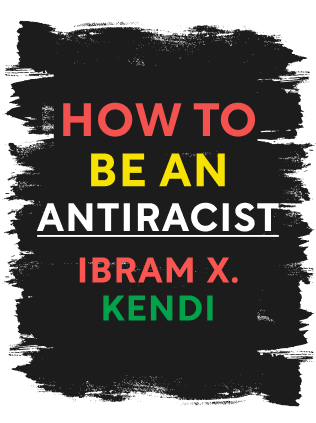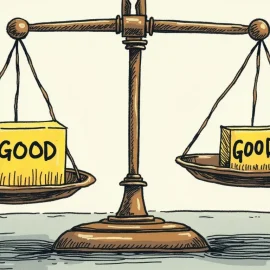

This article is an excerpt from the Shortform book guide to "How to Be an Antiracist" by tIbram X. Kendi. Shortform has the world's best summaries and analyses of books you should be reading.
Like this article? Sign up for a free trial here .
What does it mean to be “race neutral” when it comes to policies? Is it possible to have racial neutrality?
The race neutral definition identifies a situation in which something is based on factors that don’t consider race. However, it is impossible to have a racially neutral policy because each policy advances or maintains either racial inequality or equality.
Keep reading to understand more about the problems with policies that claim to be race neutral.
Racism and Antiracism: Policies
A racist policy is any law, procedure, process, guideline, or rule, written or unwritten, that causes or maintains racial inequity. “Systemic racism,” “structural racism,” and “institutional racism” are synonyms, but Ibram prefers to use “racist policy” because it’s more straightforward and concrete.
- Example #1: Some of Nixon’s fiercest criticism came from Black people and antiwar critics, so he created a policy to attack them. The policy allowed law enforcement to raid their homes and meetings in search of drugs.
- Example #2: Ohio required newly registered voters in the 2004 federal election to submit their voter-registration forms on a particular kind of expensive paper, which made it harder to register. The policy appeared to target all newly registered voters, irrespective of race, but a large percentage of newly registered voters were Black, meaning the policy caused racial inequity.
An antiracist policy is any law, procedure, process, guideline, or rule, written or unwritten, that causes or maintains racial equity.
- (Shortform example: The 1965 Voting Rights Act made it illegal to prevent people from voting based on their race.)
Racial discrimination is treating a group of people in a particular way based on their race. Racial discrimination is only racist when it creates inequity.
- An example of racial discrimination is a policy that temporarily helps an underrepresented group. While related to race, this policy isn’t racist because it aims to create equity between groups.
Racism is a combination of racist policies and ideas that causes and maintains racial inequities.
- An example of racism is the combination of policies that resulted in Black and Latinx people making up 56% of the prison population in 2016 even though they represent only around 25% of the US population. White people make up 30% of the prison population and 60% of the US population.
Antiracism is a collection of antiracist policies and ideas that cause racial equality.
- An example of antiracism is the combination of the Immigration and Nationality Act (1965), the Refugee Act (1980), and the Immigration Act (1900) that encouraged immigration to the US from non-European countries.
Race Neutral: A Missing Definition?
You’ll notice there are no definitions of terms like “not racist” or “race neutral policy.” That’s because there is no in-between when it comes to antiracism and racism—anything that’s not antiracist is racist. Likewise, there is no such thing as a “race neutral policy”: All policies and ideas either advance or hamper equality.
(Shortform example: Racist policies have created funding imbalances between Black and White schools. A scholarship program open only to Black people is antiracist because it strives for educational equality between racial groups. Axing this scholarship program because White people aren’t allowed to apply may seem “race neutral,” but, in fact, canceling the program would be racist because it would mean canceling something that’s aimed at remedying the current funding imbalance and thereby promoting racial equity.)
Race neutral programs can actually be more dangerous than the agenda of the alt right. While the alt right is unlikely to actually create a White ethnostate, racial neutrality has a track record of leaving policies that create inequity in place and striking down programs that create equity.
Additionally, racial neutrality often goes hand-in-hand with ideas around ignoring the existence of race (the notion of being “color blind”). While race is a power construct, not a meaningful scientific category, it still affects everyone’s lives. Pretending it doesn’t exist allows racists to carry out business as usual—if we ignore race, then we’re blind to racial inequity. Dispensing with racial groups will be one of the very last steps in the struggle to end racism, not the first.

———End of Preview———
Like what you just read? Read the rest of the world's best book summary and analysis of Ibram X. Kendi's "How to Be an Antiracist" at Shortform .
Here's what you'll find in our full How to Be an Antiracist summary :
- What racism is and how it evolved
- How you might have subtle racist thoughts and not even be aware of them
- Why being "not racist" isn't good enough






